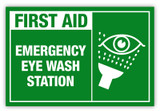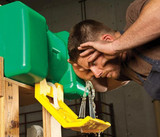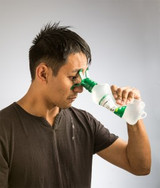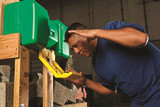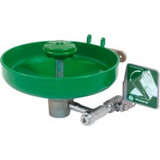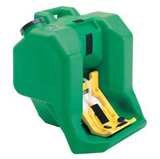Blog
The Value of Wireless Alarms and Monitoring Systems on Emergency Equipment
By Samantha Hoch, Marketing, Haws
Federal safety regulations set forth by the Occupational Safety and Health Administration (OSHA) and The American National Standards Institute (ANSI) make the importance of safety equipment in potentially dangerous working environments clear. However, the stringent guidelines for emergency showers and eyewashes don’t extend to the inclusion of mandatory alarm and electronic monitoring systems on this equipment. This oversight can create unsafe working condi
…
Jun 29th 2017
How to Comply with Important Requirements for Eye Wash Stations
The ANSI/ISEA Z358.1-2014 American National Standard covers emergency eye/face washes, showers, and combination units. It is important to know that emergency showers are designed to flush the user's body, and should not be used to flush the eyes as the high water flow pressure can damage the eyes. Eye wash stations are designed to flush the eyes/face area only. Combination units contain both features: a shower and an eyewash station.
The main requirements for eyewash stations include pr
…
Feb 17th 2017
pH Neutral vs Saline Eyewash: When To Use
By Samantha Hoch, Marketing, Haws Corp.
Personal Emergency Eyewashes are for use when dust, dirt, chemicals and other contaminants come into contact with the eyes. With multiple solution options, you need to determine which is appropriate for the most effective rinse.
STEP 1: Determine Type of Substance (Foreign, acid, alkali, irritant)
STEP 2: Select Appropriate Fluid Type and Rinse (pH Neutralizer or Saline)
STEP 3: Continue Rinsing
STEP 4: Rinse as Directed (Duration)
It is import
…
Dec 5th 2016
Portable vs. Plumbed Eyewash: Which Do I Need?
By Samantha Hoch, Marketing, Haws Corp.
The most costly injury of the more than 5 million unintentional work-related injuries in the US involves the head, averaging $82,382 per claim. In any environment, occupational safety should be taken very seriously and the appropriate emergency response is a crucial component to the overall safety of your employees and your company.
The Occupational Safety & Health Administration (OSHA), 29 CFR 1910.151, requires that “
Where the eyes or body of a
…
Oct 14th 2016
How to Use an Eyewash Testing Gauge
By Samantha Hoch, Marketing Specialist, Haws
Eyewash testing gauges are an important tool when testing eyewashes and eye/face washes for ANSI Z358.1 compliance. Make sure you are utilizing it correctly with this quick guide.
How To Use An Eyewash Gauge
To determine a suitable eyewash pattern, the eyewash testing gauge should be a minimum of 4 inches in length with two sets of parallel lines equidistant from the center. The interior of the lines should be 3.25 inches apart. (
…
Jun 29th 2016
Top 12 Non-Compliance Issues in Emergency Equipment
By Samantha Hoch, Marketing Specialist, Haws
There are two types of non-compliance when referring to emergency shower and eyewash equipment.
A. Performance Related: Any type of issue that affects the ability for the emergency shower or eyewash to provide proper first aid in the event of an emergency. This could include lack of tepid water, insufficient flow to the showerhead, eyewash heads or both, too much flow or pressure to the heads, or a combination unit that does not have the capabil
…
Jun 20th 2016
OSHA: Potential Risk From Contaminated Water in Non-Compliant Eyewash Stations
By Samantha Hoch, Marketing Specialist, Haws
Paragraph (c) of OSHA’s Occupational Safety & Health Standards – 29 CFR 1910.151 (Medical services and first aid.) requires “where the eyes or body of any person may be exposed to injurious corrosive materials, suitable facilities for
quick drenching or flushing of the eyes and body shall be provided within the work area of immediate emergency use”.
A recent OSHA Info sheet details the adverse side effects caused by contaminated water from
…
Mar 8th 2016


